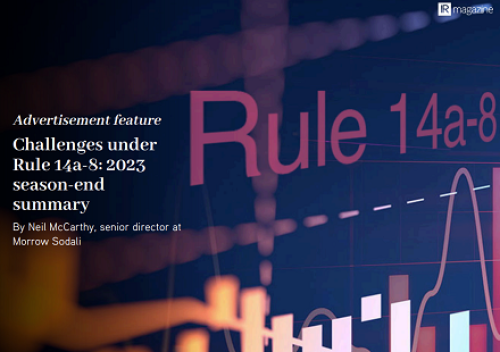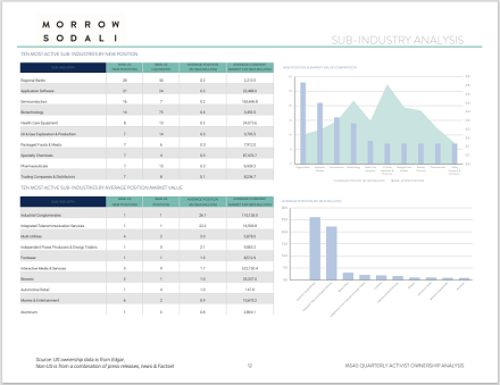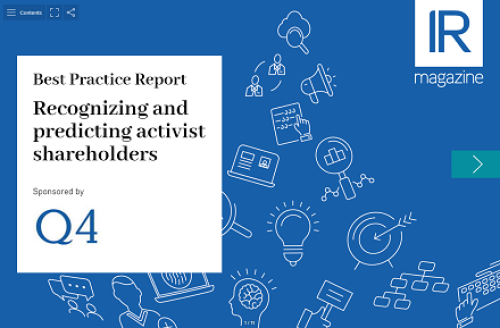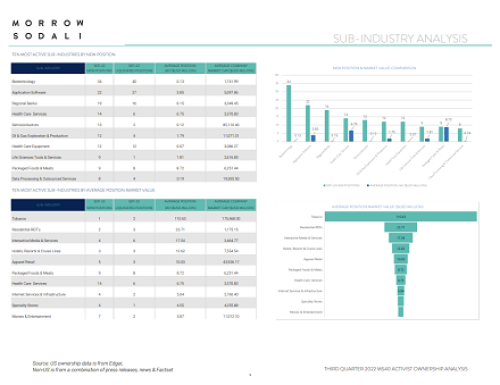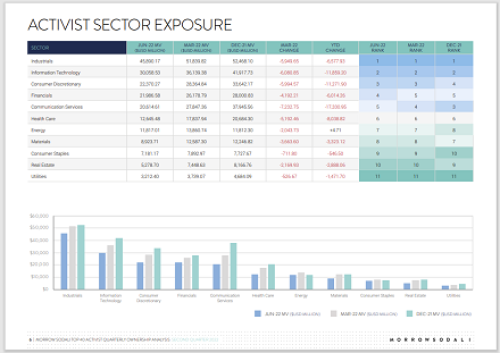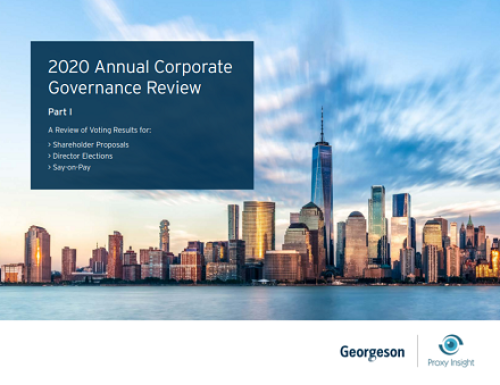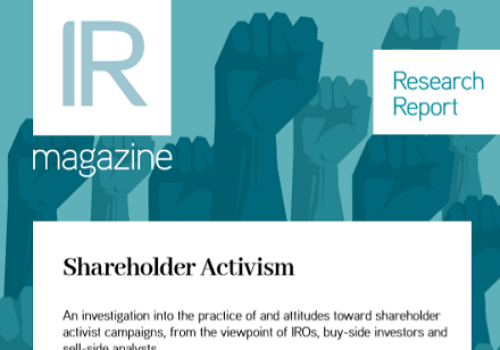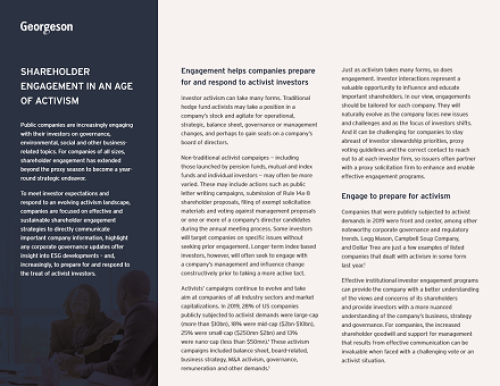Click here to read the first in the interview series, where Gianluca Ferrari, founding partner of Clearway Capital, talks TotalEnergies, going public with a campaign and targeting ESG issues – even those that might not necessarily ‘move the needle’ too much
Last week, we heard from Clearway Capital – described by Insightia as ‘Europe’s first dedicated ESG activist fund’ – about the pressure it put on TotalEnergies to exit Russia, a campaign that pushed the ‘young’ fund into the spotlight. This week, Ferrari talks to IR Magazine about the ‘granular’ level of detail the fund seeks on its investee companies and what that means for engagement.

Clearway Capital
Can you talk me through your engagement process and your expectations from the companies in which you invest?
The engagement approach from our end is actually pretty straightforward. We think of ourselves as value-added shareholders that engage in a dialogue with the company. And when we engage in a dialogue with a company, that means we’re engaging in a dialogue as any responsible business owner would with the board, with management and really trying to assess how we can work with the company in order to drive value. It’s a very proactive approach and it’s very time-consuming. We’re very, very hands-on when it comes to engagement.
I also need to add that, ideally, we’re always doing this behind the scenes. We try to build good relationships with the companies in which we invest, as if we’re partners with them.
Sometimes, however, we find companies are hesitant to embrace change. And when that happens, we have a variety of tools at our disposal as shareholders, which we can use to improve the likelihood of those changes being implemented. Every time you see us in the public domain – for example, if we write a public letter or are in the media –that’s not because we want to be in the public domain per se, but because it serves our purpose to achieve the changes we’re seeking to achieve.
We don’t control the companies we invest in. We only ever own a fraction of them. Our core business, in essence, is creating consensus among the decision-makers, both in the company and among those that can influence the company in order to drive change. Sometimes the public domain is the best way for us to achieve this.
What about communications with the company itself?
Typically, we’ll be speaking to everyone we can. We’ll reach out to investor relations, as would any other investor, and have a conversation with it – usually at a very initial stage of our analysis – to understand the business and then we’ll build on that. What we really appreciate in investor relations is transparency.
We do a ton of work trying to understand the businesses we invest in. We’ll be speaking to the CFO and CEO, we’ll be speaking to the chairman, to the senior independent director, to other directors. Then we’ll be going down to divisional directors: divisional CEOs, country CEOs. We try to get as much access as we can. This frequently includes site visits.
More often than not we’re also in contact with the company’s advisers. We have very good relationships with all the major investment banks. So we’ll also be speaking to the people who are advising the board and management and making sure our message is conveyed. We will retain as much third-party analysis as we need to feel comfortable with the companies we invest in, which, in some cases, has meant hiring the former CEO of the company itself or of a competitor to advise us as well.
We really, really try to go deep into the businesses we invest from a due diligence perspective, in a similar way to private equity. Because of this, unlike some investors that may be more interested in a concise equity story, we really appreciate granular details on the business. The more details we get, the less assumptions we need to make to justify the investment case.
Additionally, I have found that good management teams and good IR always tell it as it is, without sugarcoating bad news. When we see companies repeatedly miss guidance and hear management trying to deflect challenging questions from investors or analysts or otherwise using jargon that is inconsistent with their results, we will always ask ourselves whether the company could do better under new management.
As activists, we view this as an opportunity because more frequently than not, when we find companies whose numbers disappoint the market but whose management teams and IR do not seem bothered, there tends to be broad discontent among existing shareholders increasing the likelihood that we will get support for any proposals we bring to a shareholder meeting.
Do you have average holdings or average holding periods?
We think of ourselves as long-term investors. When we’re looking at a company, we’re thinking: how will this company develop over the next decade, perhaps? Will this company’s products or services be relevant in 10 or 15 years' time? And then we back that into what’s happening in the short to medium term. What that usually results in is us holding on to a company for between three and five years.
The reason for such a short holding period, compared with the type of considerations we’re making when we research a company, is just a matter of price and value. We look for companies we think could be worth more than the price at which we can buy them. And then, if we do our jobs right, the market appreciates the value we’ve created. When the price that the market is willing to pay us for our shares reflects the underlying value that we think the company is worth, we will we sell our shares – and that, in my experience happens in between three and five years, on average.
In terms of holding size, it really will depend on the size of the company, on the shareholder base. It depends on a number of things. As I’ve said, our job is to create consensus among stakeholders. We’re bringing an alternate view to the table, to the board, to the company and to its shareholders – alternate to what the company is doing currently.
If our ideas are good, they should be embraced irrespective of the size of our holding. In theory, the company should be doing these things, even if we don’t own shares.

